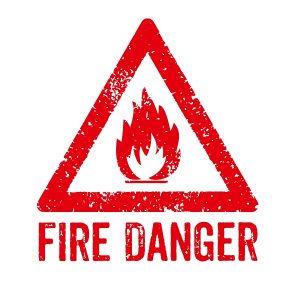
When you run a business, you need to learn as much as you can about your fire protection systems.
When you run a business, you need to learn as much as you can about your fire protection systems. If you familiarize yourself with these terms it will be easier to communicate with your fire protection services company about your business needs and challenges.
Wet Pipe and Dry Pipe
When you are looking to install or upgrade your existing fire sprinkler systems, there are two main types. Wet pipe and dry pipe systems. Wet pipe systems are the most common type of fire sprinkler system. These sprinklers provide fire protection through the use of a water supply. This means that the fire pumps and pipes connected to your fire sprinklers will have the amount of water pressure and water flow that they need to contain and extinguish fires. The pipes are always full of water. If a sprinkler head pops, the water flow will be instant.
Dry pipe systems have the water source stored under pressure at the sprinkler valve. The actual pipes are dry and filled with compressed air. When a sprinkler head pops, the release in airflow opens up the valve and allows the water to flow. . Dry Sprinkler Systems are installed in areas where exposure to cold temperatures are more likely to cause a wet pipe system to freeze. If your building doesn’t have any heating, then you can expect to find a dry pipe sprinkler system. They’ll also be in parking garages on and canopies. By keeping the pipes free of water this prevents frozen pipes that may burst and flood.
Clean Agents
Clean agents are chemical suppression systems that are ideal for areas where you do not want water to damage the facility or equipment, such as a data center or museum. These clean agents provide excellent fire protection whenever a fire occurs, and they won’t leave any residue or water damage. Common types of clean agents include FM-200 and Novec 1230. These systems are usually found in server rooms, libraries, and museums.
NFPA Standards
The National Fire Protection Association issues new safety standards every 3-5 years. These standards help you design better fire protection systems and enhance your fire prevention strategies. Some examples standards are:
- NFPA 10 – which has to do with portable fire extinguishers;
- NFPA 25 – which has to do with inspecting sprinkler systems;
- NFPA 72 – which has to do with inspecting fire alarm systems.
Backflow Preventers
Backflow occurs when liquids, gases, and suspended solids reverse into the water supply and subsequently contaminate the water. Once installed, backflow preventers can keep this from happening.
Fire Prevention and Protection Services from Fireline
Whether you need smoke detectors, fire extinguishers, or an automatic sprinkler system installed at your rental property, Fireline has you covered. We have been protecting people and properties from fire damage since 1947—and our experience shows in our excellent work! We are known for our wonderful customer service, our expertise, and our reliability. For more information on how we can help your residential or commercial property, visit us online or give us a call at (800) 553-3405. We are located in Baltimore, MD, with a second office in Leesburg, VA. For more fire safety tips, be sure to follow us on Facebook, Twitter, LinkedIn, and Google+.
